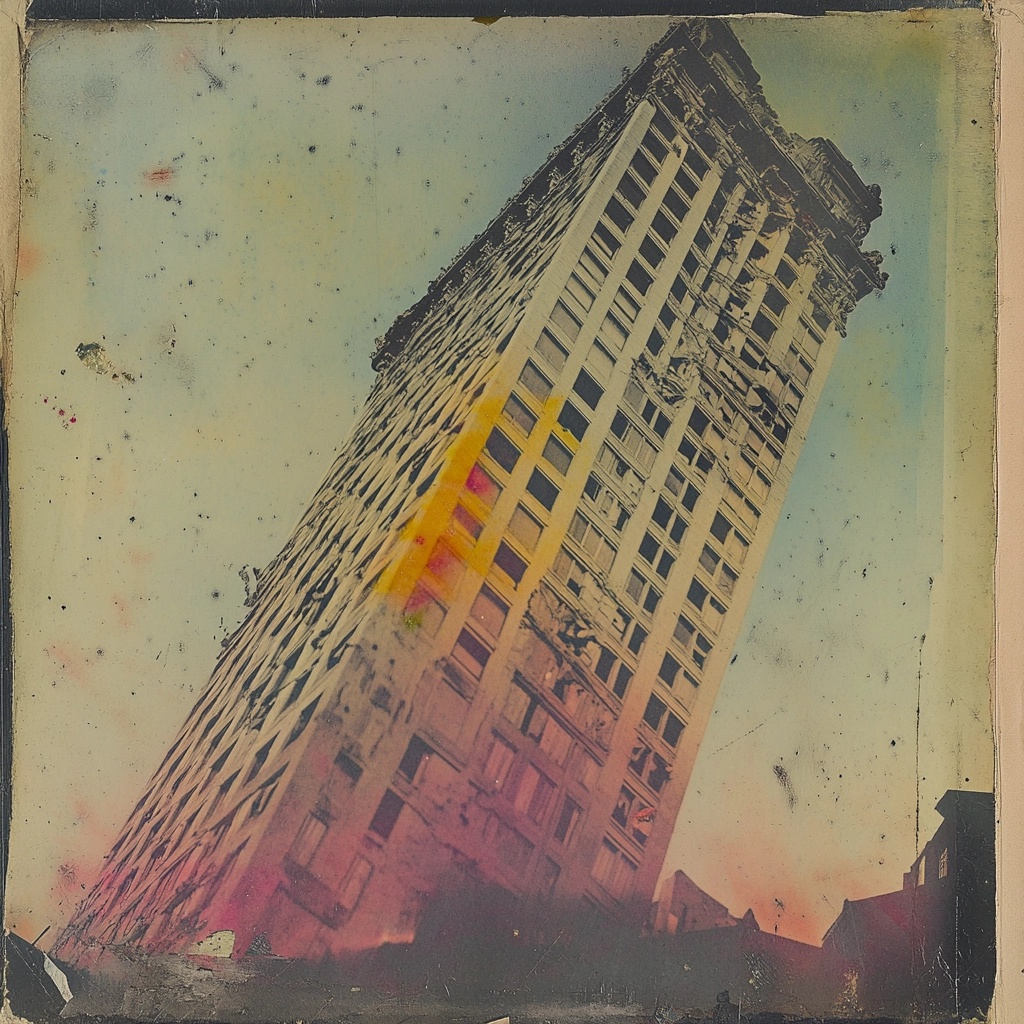THE SKYSCRAPER IN B FLAT (2)
By:
March 7, 2025

“The Skyscraper in B Flat,” which originally appeared in The Black Cat (June 1904), is is an example of proto-sf’s fascination with the power of vibrations. HiLoBooks is pleased to serialize the story for HILOBROW’s readers.
ALL INSTALLMENTS: 1 | 2 | 3 | 4 | 5.
Late in the afternoon of the 18th of December, several of the occupants of the upper floors of the Platte Building noticed a faint tremor of the framework as if from the jar of heavy traffic outside. It was extremely slight, however, and at five or six o’clock almost every one left the building without having given the phenomenon a moment’s thought.
Several business men returned to the building after dinner that evening, to deal with the unusual work incidental to the end of the year. These, when they arrived, found the watchman of the bank in animated conversation with two policemen in the outer hall. He had telephoned for help, under the impression that an attempt was being made to undermine the vault.
The whole building was vibrating with a jarring tremor. The floors tingled unpleasantly under the boot soles, and a faint, tense humming sound seemed to come from every inch of the walls. It was quickly clear that it could be from no burglarious mine. The police searched all the adjoining ground. There was nothing to account for the disturbance, and none of the neighboring buildings appeared to be affected in the least. There was no heavy traffic on the street at that hour and there was no wind.
Some one suggested an earthquake, but an earthquake is not localized in a city block. Bond was called by telephone. He arrived half an hour later, and found a large and increasing crowd on the sidewalk, touching the walls experimentally to feel the tremor, and listening to the increasing, droning humming of the framework. He at once started up-stairs to investigate, in which adventure no one cared to follow him. The whole building was empty. The scores of office doors were shut and dark. The elevators had stopped at six o’clock.
The cashier of the bank presently arrived in a state of much perturbation, and, after fussing about for some minutes, went to the vaults and came out laden with ledgers and tin boxes. Upon this suggestion, all the office occupants began to think of rescuing their books and papers. Cabs and express wagons were summoned, and the drivers were offered handsome rewards to go up to the higher floors where the owners of the endangered valuables dared not go.
By this time the oscillation of the building was really alarming. It wavered exactly as a bridge does at the passage of a heavy train. The news had spread rapidly through the city and a mob of a thousand persons very soon filled the street. Among these were most of the tenants of the Platte Building offices, but few dared to go inside.
Those heroes, however, who had ventured up-stairs, were working manfully. Excited by the shouts from below and by their own haste and danger, they fell into a perfect frenzy of rescue. Office doors were smashed recklessly open. A number of small safes came thundering ponderously down the circular stairway, and ledgers and boxes were dropped by dozens down the well. The men burst open locked desks, flung armfuls of documents and stationery out the windows, and turned on all the electric lights till the tall building glowed like a factory.
RADIUM AGE PROTO-SF: “Radium Age” is Josh Glenn’s name for the nascent sf genre’s c. 1900–1935 era, a period which saw the discovery of radioactivity, i.e., the revelation that matter itself is constantly in movement — a fitting metaphor for the first decades of the 20th century, during which old scientific, religious, political, and social certainties were shattered. More info here.
SERIALIZED BY HILOBOOKS: James Parker’s Cocky the Fox | Annalee Newitz’s “The Great Oxygen Race” | Matthew Battles’s “Imago” | & many more original and reissued novels and stories.
